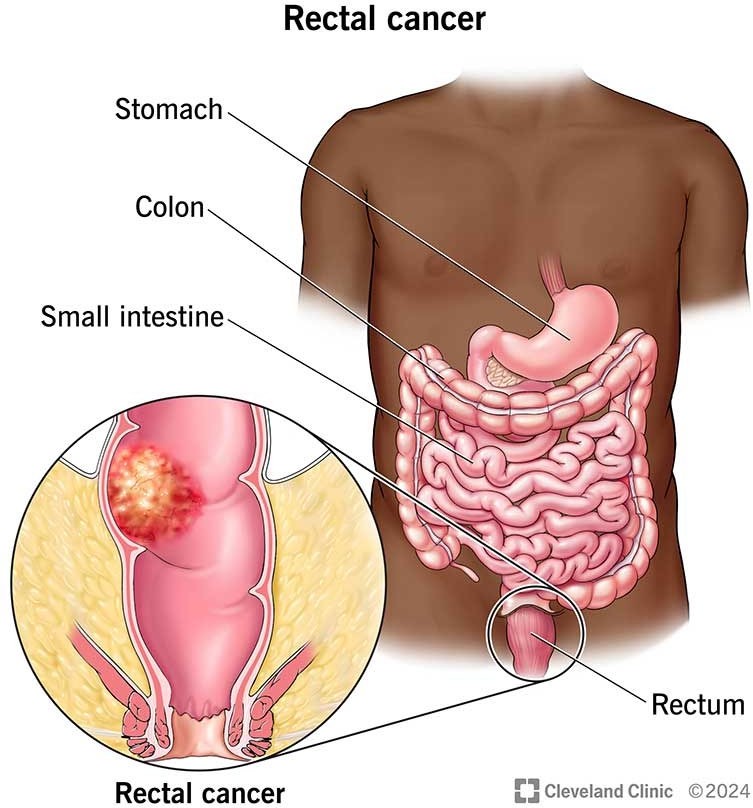A nurse is planning care for a client who requires screening for rectal cancer. Which of the following tests should the nurse anticipate in the client's plan of care?
Upper GI series
Colonoscopy
Endoscopic retrograde cholangiopancreatography (ERCP)
Upper GI endoscopy
The Correct Answer is B
Choice A reason: An upper GI series is a series of X-rays used to examine the esophagus, stomach, and small intestine, not the rectum or colon.
Choice B reason: A colonoscopy is the most appropriate test for screening for rectal cancer as it allows for the
examination of the entire colon and rectum and can also facilitate the removal of polyps.
Choice C reason: ERCP is primarily used to diagnose and treat conditions in the liver, gallbladder, bile ducts, and pancreas, not the rectum.
Choice D reason: An upper GI endoscopy, or esophagogastroduodenoscopy (EGD), is used to examine the lining of the upper part of the gastrointestinal tract, which includes the esophagus, stomach, and duodenum, not the rectum.
 |
Nursing Test Bank
Naxlex Comprehensive Predictor Exams
Related Questions
Correct Answer is C
Explanation
Choice A reason: Metabolic Acidosis typically results from conditions that increase acid production or decrease acid excretion, not from vomiting.
Choice B reason: Respiratory Acidosis is caused by hypoventilation leading to an accumulation of carbon dioxide, which is not directly related to vomiting.
Choice C reason: Metabolic Alkalosis can occur due to the loss of stomach acids through prolonged vomiting, leading to an excess of bicarbonate in the body fluids.
Choice D reason: Respiratory Alkalosis is usually caused by hyperventilation, not by vomiting.
Correct Answer is D
Explanation
Choice A reason: Evaluation is the final step of the nursing process, where the nurse assesses the client's response to the nursing interventions.
Choice B reason: Data Collection is the first step of the nursing process, where the nurse gathers information about the client's health status.
Choice C reason: Re-collection of Data may be necessary if there are changes in the client's condition, but it is not the immediate next step after planning.
Choice D reason: Implementation is the correct answer because it is the step where the nurse puts the care plan into action, following the planning step.
Whether you are a student looking to ace your exams or a practicing nurse seeking to enhance your expertise , our nursing education contents will empower you with the confidence and competence to make a difference in the lives of patients and become a respected leader in the healthcare field.
Visit Naxlex, invest in your future and unlock endless possibilities with our unparalleled nursing education contents today
Report Wrong Answer on the Current Question
Do you disagree with the answer? If yes, what is your expected answer? Explain.
Kindly be descriptive with the issue you are facing.
